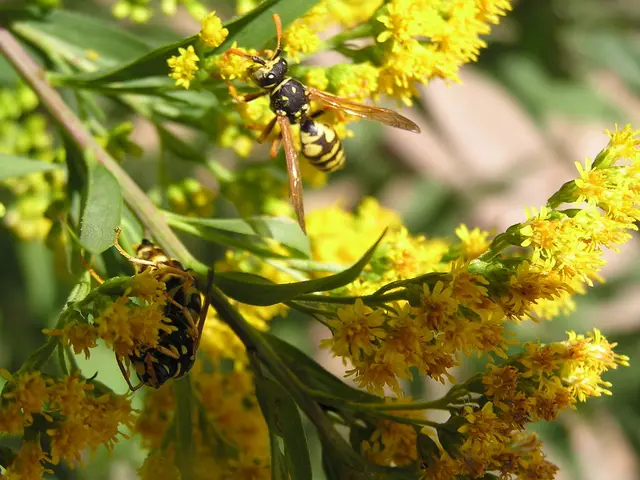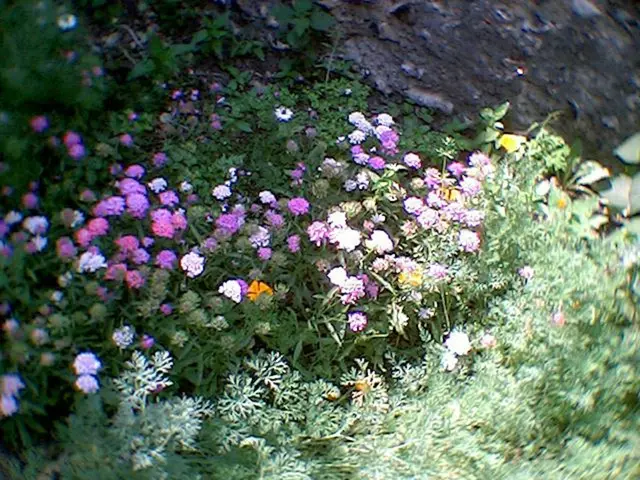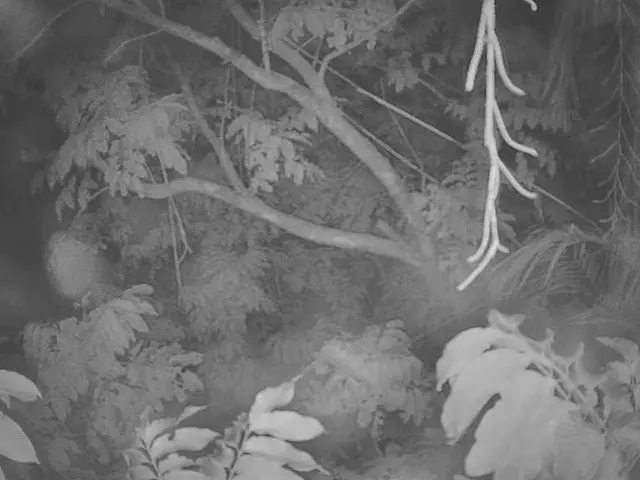Toxic Weeds and Stingers: Your Guide to North American Garden Intruders
Avoid Bare-Handed Handling: 8 Toxic Weeds That Can Cause Harm Without Protective Gloves
Ever stumbled upon something in your garden that gave you a nasty rash, made you sick, or even threatened your life? You're not alone. Noxious and prickly weeds often lurk in unsuspecting yards, causing skin irritation and other health issues. Before you suit up and march into battle against the weeds, get familiar with these common unwanted guests and handle them with caution (and protective gloves).
Toxic Weeds
Inadvertent contact with toxic or poisonous weeds can lead to various health problems, including irritated skin, blisters, dizziness, nausea, and – in extreme cases – infections. Here's a rundown of the most notorious problematic and poisonous foliage found in your backyard, as well as what you can do to take action.
1. Poison Ivy
Toxicodendron radicans, the infamous poison ivy, is a poisonous plant native to most of the 48 contiguous U.S. states. Typically found climbing up trees or other supports, it sometimes appears as a small shrub. Boasting three smooth to slightly notched leaflets and white waxy-coated berry-like fruit, poison ivy contains an oil known as urushiol. This sap can cause a rash upon contact and may persist on clothing and tools for weeks, so be sure to wash them thoroughly in warm, soapy water if you come into contact with this pesky plant.
2. Poison Oak
Atlantic or Eastern poison oak (Toxicodendron pubescens) usually sports three leaflets, although it may have five, seven, or even nine. This variety tends to resemble an oak leaf. It is found in the South and East U.S., growing as a shrub, but more commonly as a vine in the West. Small white flowers will lead to velvety gray or tan berries in the spring. Word of caution: Never attempt to remove poison oak by burning the leaves, as the fumes can be deadly.
3. Poison Sumac
Found in the Midwest, Northeast, and some Southeast U.S., poison sumac (Toxicodendron vernix) bears clusters of white or green berries and has leaves with a slight sheen and red stems. This toxic plant is quite distinct with its seven to thirteen smooth, paired leaflets per stem. Control and removal of poison sumac require patience, as it calls for regular cutting and applications of horticultural vinegar (always while wearing protective gloves).
4. Poison Hemlock
Originally from Europe, Africa, and Asia, poison hemlock (Conium maculatum) is invasive in North America. Consuming any part of poison hemlock, even in small quantities, can lead to death. All parts of the plant contain toxic alkaloids, although the mature fruit and seeds are the deadliest. The plant reaches 3 to 8 feet in height, with hollow, ridged stems dotted with purple spots, fern-like foliage, and a taproot. Remember to wear gloves and protective clothing when handling poison hemlock.
5. Water Hemlock
A member of the same family (Apiaceae) as poison hemlock, water hemlock (Cicuta maculata) is even deadlier. Its hollow stems are purple-streaked, rather than purple-spotted, and it possesses fleshy tubers instead of a deep taproot. Ingesting any part of this plant can lead to seizures, paralysis, or death. The toxins are also absorbed through the skin, so either avoid it altogether or wear protective garb including goggles and a mask when dealing with water hemlock.
Prickly Weeds
These weeds are usually more of a nuisance than a danger, but festering wounds from stinging weeds can still lead to serious injury. Exercise caution when encountering these prickly plants:
6. Cow Parsnip
Cow parsnip (Heracleum maximum) has hollow stems covered in tiny hairs and radiating foliage. In its second year, this perennial-biennial sends up a 4-15 foot stem topped with an umbrella of tiny white blooms. It secretes a sap that, when exposed to sunlight, produces toxins that can cause a painful, dangerous blistering rash. To protect yourself, wear long sleeves and pants whenever dealing with cow parsnip.
7. Stinging Nettle
Stinging nettle (Urtica dioica) is found throughout North America and temperate regions of the Northern Hemisphere. Its 6-foot fibrous, hairy stems, heart-shaped, serrated foliage, and needle-like hairs can induce a painful, irritating reaction when brushed against. Protecting yourself with gloves, goggles, and a mask can help, but be aware that some gardeners cultivate stinging nettle for medicinal and culinary purposes.
8. Sandbur
Sandbur (Cenchrus longispinus or C. incertus) grows primarily in sandy soil but can be found in pastures, sports fields, and lawns. Its spiny burs can harm both people and pets. To control this sandy interloper, regular lawn-mowing can help keep irritating sandbur seed heads at bay.
Stay safe when handling weeds by wearing long pants, sleeves, sturdy boots, and a good pair of gloves. In some cases, safety goggles and a mask may be necessary, especially when dealing with plants like stinging nettle and giant hogweed. Don't forget to opt for anti-fog goggles to prevent eye irritation, and invest in adjustable gloves for long-lasting protection.
For a comprehensive, user-friendly guide on identifying troublesome weeds and learning effective removal techniques, check out our e-book "How to Identify and Eradicate Toxic and Prickly Weeds" from our platform's shop. Your yard is your canvas, so paint it in shades of safety and success!
- In the realm of science, understanding the characteristics and impacts of toxic and prickly weeds can contribute significantly to maintaining health-and-wellness, especially when gardening in home-and-garden spaces.
- By educating oneself about common unwanted garden guests such as poison ivy, poison sumac, and stinging nettle, one can make informed lifestyle choices to minimize potential health risks and ensure a safer home-and-garden environment.








